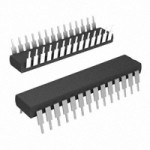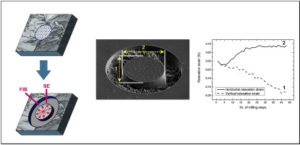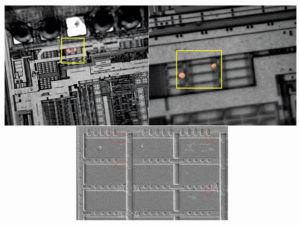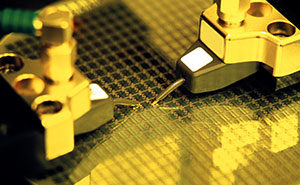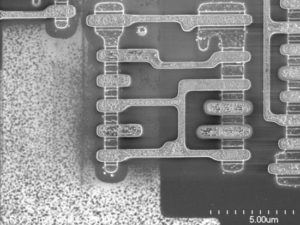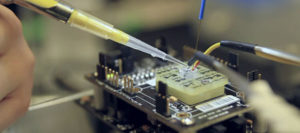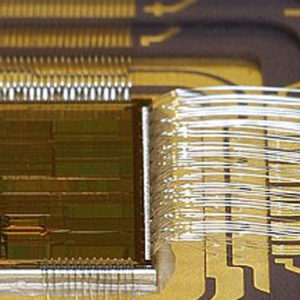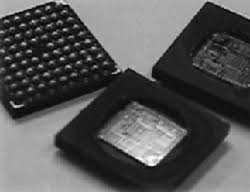Unlock MCU ATmega640V Program
Unlock MCU ATmega640V and remove its protective fuse bit by focus ion beam, edit the circuity connection inside the microcontroller to extract the Program from flash memory and data of eeprom memory by breaking Microcontroller;
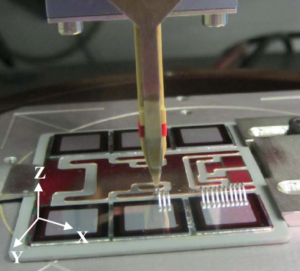
Unlock MCU ATmega640V and remove its protective fuse bit by focus ion beam, edit the circuity connection inside the microcontroller to extract the Program from flash memory and data of eeprom memory by breaking Microcontroller
XTAL1 and XTAL2 are the input and output, respectively, of an inverting amplifier that can be configured for use as an on-chip oscillator, as shown in Figure 11. Either a quartz crystal or ceramic resonator may be used. To drive the device from an external clock source, XTAL2 should be left unconnected while XTAL1 is driven, as shown in Figure 12.
There are no requirements on the duty cycle of the external clock signal, since the input to the internal clocking circuitry is through a divide-by-two flip-flop, but minimum and maximum voltage high and low time specifications must be observed if microchip pic16f873a code extraction.
In idle mode, the CPU puts itself to sleep while all the on-chip peripherals remain active. The mode is invoked by software. The content of the on-chip RAM and all the special functions registers remain unchanged during this mode. The idle mode can be terminated by any enabled interrupt or by a hardware reset.
Note that when idle mode is terminated by a hardware reset, the device normally resumes program execution from where it left off, up to two machine cycles before the internal reset algorithm takes control. On-chip hardware inhibits access to internal RAM in this event, but access to the port pins is not inhibited.
To eliminate the possibility of an unexpected write to a port pin when idle mode is terminated by a reset, the instruction following the one that invokes idle mode should not write to a port pin or to external memory when microchip pic16f876a bin hacking.
In the power down mode, the oscillator is stopped and the instruction that invokes power down is the last instruction executed. The on-chip RAM and Special Function Registers retain their values until the power down mode is terminated.
Exit from power down can be initiated either by a hardware reset or by an enabled external interrupt. Reset redefines the SFRs but does not change the on-chip RAM. The reset should not be activated before VCC is restored to its normal operating level and must be held active long enough to allow the oscillator to restart and stabilize before microchip pic16f684 bin attacking.
To exit power down via an interrupt, the external interrupt must be enabled as level sensitive before entering power down. The interrupt service routine starts at 16 ms (nominal) after the enabled interrupt pin is activated.
Tags: unlock mcu archive,unlock mcu binary,unlock mcu code,unlock mcu content,unlock mcu data,unlock mcu eeprom,unlock mcu file,unlock mcu firmware,unlock mcu heximal,unlock mcu information,unlock mcu memory,unlock mcu program


